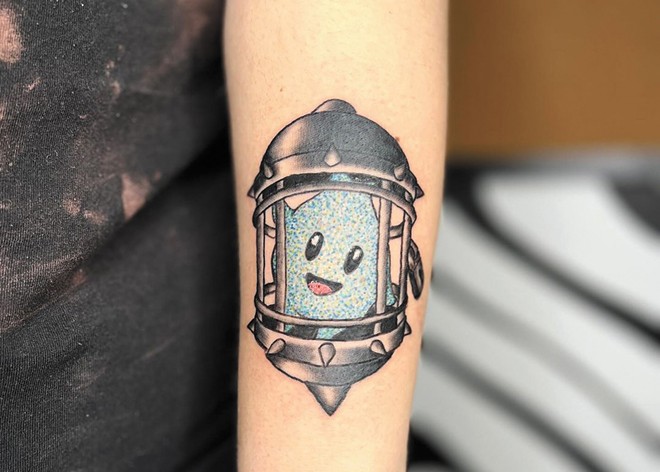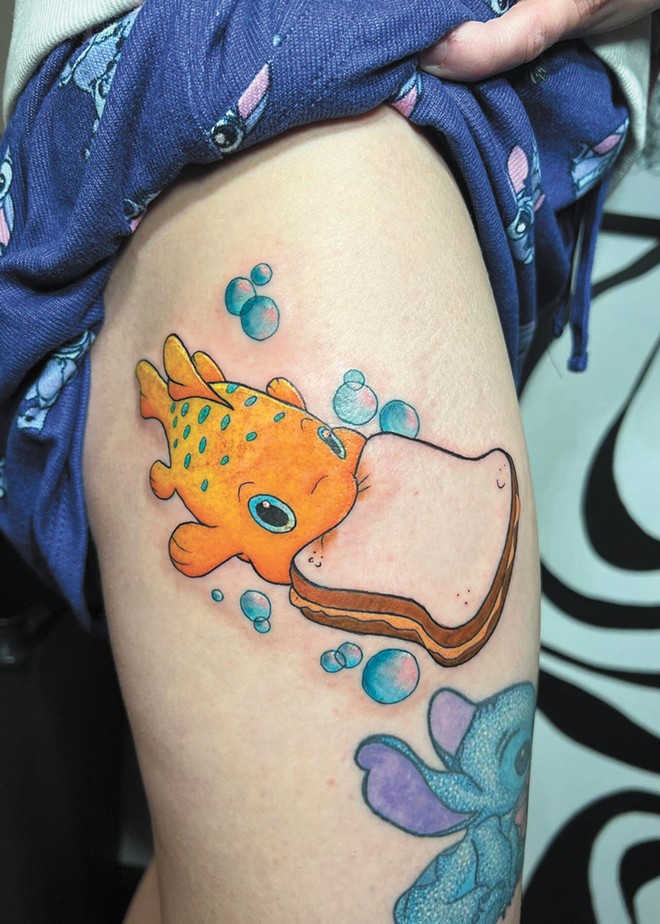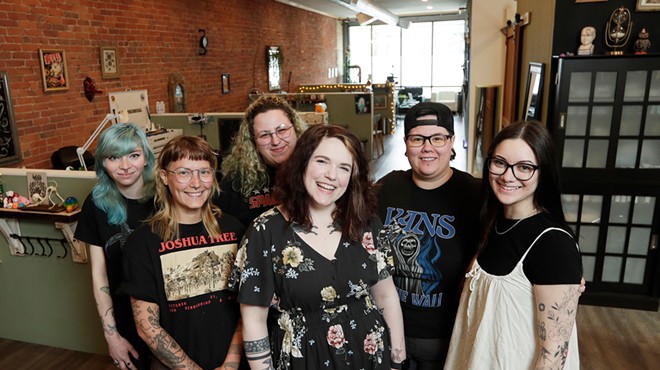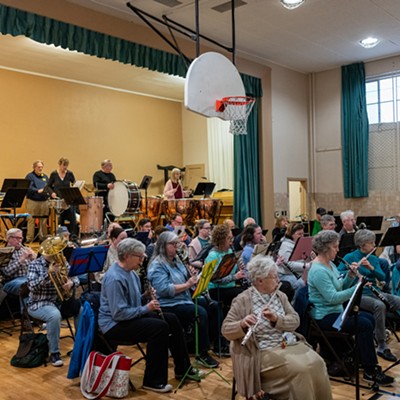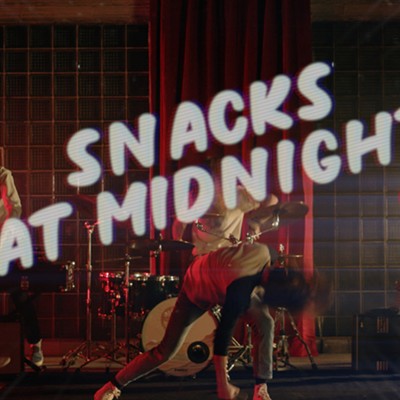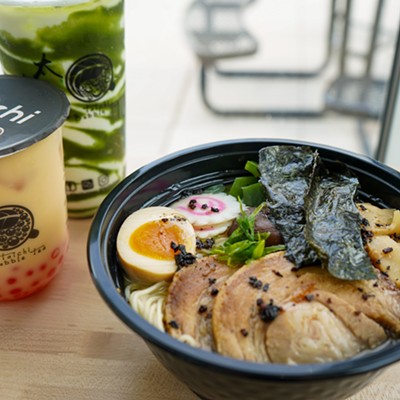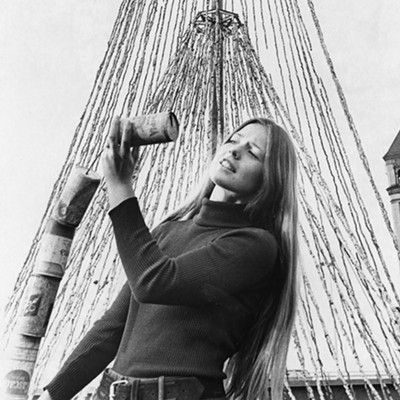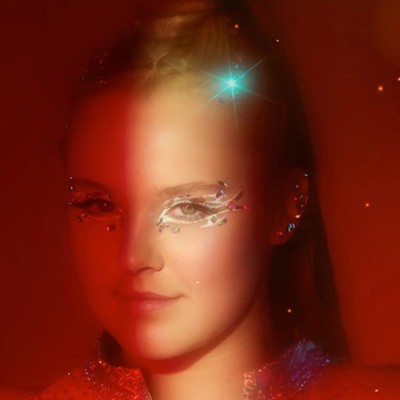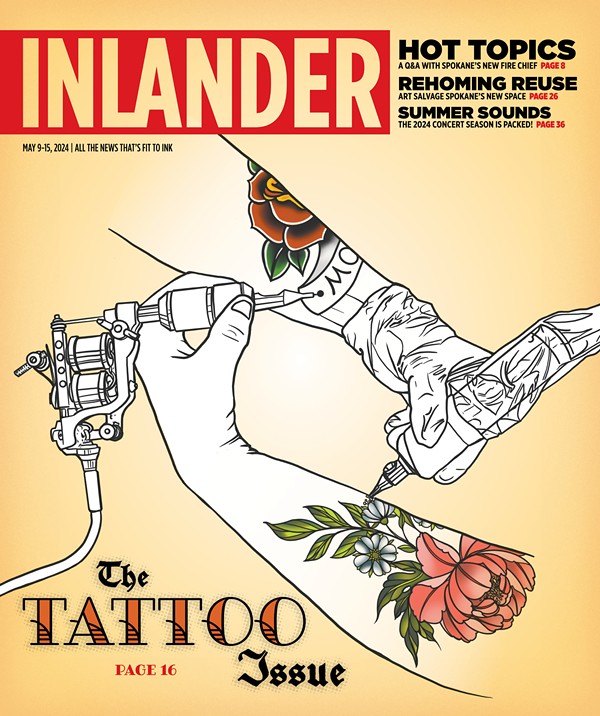Spokane artist Ali Haines loves to create cute tattoos.
"I do illustrative, kawaii or anime. Cute stuff everywhere," she says.
Haines' Instagram feed (@kawaiiinks) is filled with adorable examples like Studio Ghibli's Totoro mid-run, a glittery Snorlax Pokémon and DoodleBob from SpongeBob. One of her favorite tattoos she's done is Pudge from Lilo & Stitch eating a peanut butter sandwich.
Haines now inks her art onto living canvases at Auralite Art Collective. She previously focused on digital drawing, painting and photography, yet never imagined becoming a tattoo artist.
"One of the reasons why I didn't want to tattoo before was because that shit's permanent," she says. "If I mess up, I mess up. That's terrifying."
After Haines decided she didn't want to make a living doing photography, however, a family member suggested tattooing. She dove deep into the tattoo world and found herself reimagining what once felt like a terrifying prospect as a career. In fall 2023, Haines got her Washington state tattoo license after apprenticing under Auralite Collective's owner, Hailey Elixman.
Auralite focuses on healing and self-expression for both its artists and clients thanks to Elixman's unique approach to tattooing. She's also certified in integrative energy and sound healing and incorporates these alternative practices into clients' tattoo appointments. Elixman's work and style — botanical, fine line, blackwork, trippy line work and ornamental — inspired Haines.
The first time Haines asked to apprentice, however, Elixman turned her down.
In the tattoo industry, apprenticeships are not easy to come by. Typically, aspiring tattoo artists create portfolios of their work, either physically or digitally. Then they take these examples to tattoo shops to ask if anyone's looking for an apprentice or willing to mentor one. Once an experienced tattooist agrees, the apprenticeship structure depends on the mentor. Most partnerships last one to two years, with the first half focusing on drawing abilities and learning tattoo terminology and techniques. The second half involves actual tattoo work on human skin.
Elixman's apprenticeships, however, are a little different, and depend on each person's skill level coming in.
"A lot of the time mentors will use their apprentices to do all their dirty work, go on coffee runs, clean up," says Elixman, "They don't teach their apprentices how to tattoo until years later to create a 'loyalty' bond, as the tattoo industry is heavily gatekept."
Elixman doesn't believe in gatekeeping and wants to help people who are passionate about tattooing enter the industry. As such, she prefers her students to have shorter apprenticeships. Haines' lasted only a few months once the pair reconnected about working together after Elixman's initial rebuff.
In the beginning, Elixman's student artists spend time drawing while she teaches topics like safety, cleanliness, linework and marketing. Mentees practice stenciling and tattooing on fake skin made of silicone before tattooing for free on willing participants.
"Because [Ali] had done extensive research and had been educating herself prior, I felt that she didn't need her apprenticeship for long. Once I was confident in her ability to be a successful tattoo artist, I graduated her," Elixman says.
"The transition to learning it all was like 'Woah, this is weird and extremely different,'" Haines says. "But the longer I've been tattooing and the more I get used to it, it's kinda just like a light switch."
Now Haines has many clients who've sought out her signature "cute" style. She does the majority of her marketing on Instagram and Facebook, posting photos of her work or digital drawings ready to be tattooed, such as manga panels and anime characters. Clients who want something other than these flash tattoo designs can describe what they're looking for, letting Haines come up with a design.
"I usually try to steer people into letting me draw what I want to draw and how I want to draw it, and make it so they like it, too," Haines says.
After design approval, she prints out multiple stencils so the client can choose how large or small they want their tattoo. Haines makes sure to emphasize that once she's put her needle to skin, there's no taking it back.
"I used to tell people I would never [tattoo], that it's way too much pressure for myself," Haines says.
Yet with time and guidance, her place in the tattoo world has become permanent, too. ♦

